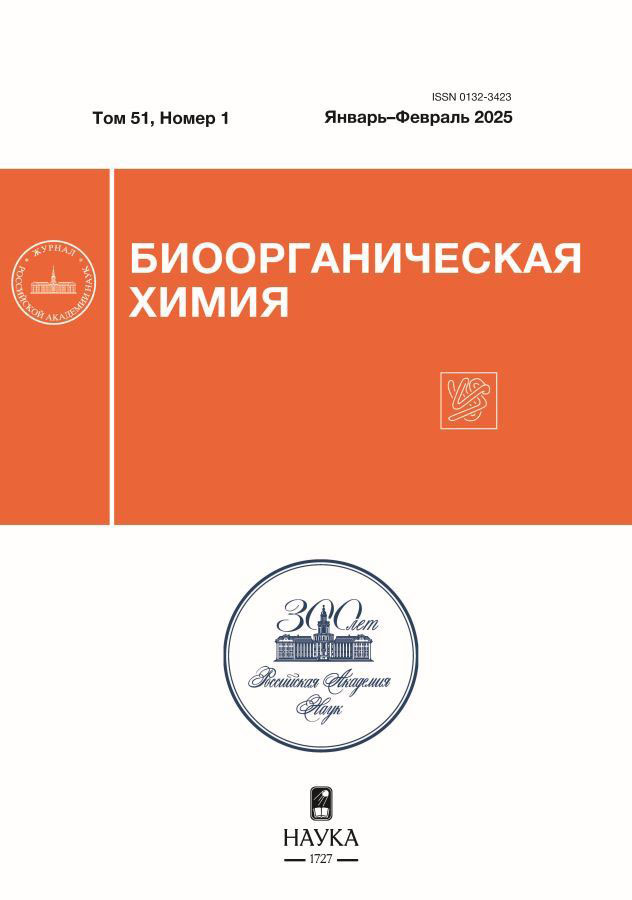Visualization of h3k9me3 in embryoid bodies using genetically encoded fluorescent sensor MPP8-Green
- Авторлар: Stepanov A.I.1,2, Zhigmitova E.B.3, Dashinimaev E.B.3, Galiakberova A.A.3, Putlyaeva L.V.1,2, Lukyanov K.A.2, Gurskaya N.G.1,2,3
-
Мекемелер:
- Skolkovo Institute of Science and Technology
- Shemyakin–Ovchinnikov Institute of Bioorganic Chemistry
- Pirogov Russian National Research Medical University
- Шығарылым: Том 51, № 1 (2025)
- Беттер: 63-71
- Бөлім: Articles
- URL: https://transsyst.ru/0132-3423/article/view/683097
- DOI: https://doi.org/10.31857/S0132342325010064
- EDN: https://elibrary.ru/LZMZHL
- ID: 683097
Дәйексөз келтіру
Аннотация
Epigenetic histone modifications play a key role in the differentiation of stem cells into various cell types. The ability of induced pluripotent stem cells (iPSCs) to differentiate is assessed using the embryoid body formation method, which is widely used and prevalent in iPSC research. In this study, we utilized a stable line of iPSCs with a genetically encoded sensor MPP8-Green to visualize the histone modification H3K9me3 during embryoid body formation. We identified two groups of cells based on the distribution of H3K9me3 in the formed embryoid bodies, using the MPP8-Green sensor. This study demonstrates that the MPP8-Green sensor can be used to track the dynamics of H3K9me3 during spontaneous differentiation and embryoid body formation. Using the sensor, we identified two groups of cells with different distributions of H3K9me3 and showed the potential application of such genetically encoded tools to reveal differences in patterns of epigenetic modifications during the spontaneous differentiation of iPSCs.
Негізгі сөздер
Толық мәтін
Авторлар туралы
A. Stepanov
Skolkovo Institute of Science and Technology; Shemyakin–Ovchinnikov Institute of Bioorganic Chemistry
Хат алмасуға жауапты Автор.
Email: gurskayanadya@gmail.com
Ресей, Moscow; Moscow
E. Zhigmitova
Pirogov Russian National Research Medical University
Email: gurskayanadya@gmail.com
Ресей, Moscow
E. Dashinimaev
Pirogov Russian National Research Medical University
Email: gurskayanadya@gmail.com
Ресей, Moscow
A. Galiakberova
Pirogov Russian National Research Medical University
Email: gurskayanadya@gmail.com
Ресей, Moscow
L. Putlyaeva
Skolkovo Institute of Science and Technology; Shemyakin–Ovchinnikov Institute of Bioorganic Chemistry
Email: gurskayanadya@gmail.com
Ресей, Moscow; Moscow
K. Lukyanov
Shemyakin–Ovchinnikov Institute of Bioorganic Chemistry
Email: gurskayanadya@gmail.com
Ресей, Moscow
N. Gurskaya
Skolkovo Institute of Science and Technology; Shemyakin–Ovchinnikov Institute of Bioorganic Chemistry; Pirogov Russian National Research Medical University
Email: gurskayanadya@gmail.com
Ресей, Moscow; Moscow; Moscow
Әдебиет тізімі
- Bou Kheir T., Lund A.H. // Essays Biochem. 2010. V. 48. P. 107–120. https://doi.org/10.1042/bse0480107
- Crouch J., Shvedova M., Thanapaul R.J.R.S., Botchkarev V., Roh D. // Cells. 2022. V. 11. P. 672. https://doi.org/10.3390/cells11040672
- Jambhekar A., Dhall A., Shi Y. // Nat. Rev. Mol. Cell Biol. 2019. V. 20. P. 625–641. https://doi.org/10.1038/s41580-019-0151-1
- Millán-Zambrano G., Burton A., Bannister A.J., Schneider R. // Nat. Rev. Genet. 2022. V. 23. P. 563– 580. https://doi.org/10.1038/s41576-022-00468-7
- Bannister A.J., Kouzarides T. // Cell Res. 2011. V. 21. P. 381–395. https://doi.org/10.1038/cr.2011.22
- Nicetto D., Zaret K.S. // Curr. Opin. Genet. Dev. 2019. V. 55. P. 1–10. https://doi.org/10.1016/j.gde.2019.04.013
- Stepanov A.I., Besedovskaia Z.V., Moshareva M.A., Lukyanov K.A., Putlyaeva L.V. // Int. J. Mol. Sci. 2022. V. 23. P. 8988. https://doi.org/10.3390/ijms23168988
- Yun M., Wu J., Workman J.L., Li B. // Cell Res. 2011. V. 21. P. 564–578. https://doi.org/10.1038/cr.2011.42
- Sánchez O.F., Mendonca A., Min A., Liu J., Yuan C. // ACS Omega. 2019. V. 4. P. 13250–13259. https://doi.org/10.1021/acsomega.9b01413
- Brickman J.M., Serup P. // Wiley Interdiscip. Rev. Dev. Biol. 2017. V. 6. https://doi.org/10.1002/wdev.259
- Dar A., Gerecht-Nir S., Itskovitz-Eldor J. // Chapter 27. Human Vascular Progenitor Cells. In: Essentials of Stem Cell Biology (Second Edition) / Eds. Lanza R., Gearhart J., Hogan B., Melton D., Pedersen R., Thomas E.D., Thomson J., Wilmut I. San Diego: Academic Press, 2009. P. 227–232.
- Stepanov A.I., Shuvaeva A.A., Putlyaeva L.V., Lukyanov D.K., Galiakberova A.A., Gorbachev D.A., Maltsev D.I., Pronina V., Dylov D.V., Terskikh A.V., Lukyanov K.A., Gurskaya N.G. // Cell Mol. Life Sci. 2024. V. 81. P. 381. https://doi.org/10.1007/s00018-024-05359-0
- Müller I., Moroni A.S., Shlyueva D., Sahadevan S., Schoof E.M., Radzisheuskaya A., Højfeldt J.W., Tatar T., Koche R.P., Huang C., Helin K. // Nat. Commun. 2021. V. 12. P. 3034. https://doi.org/10.1038/s41467-021-23308-4
- Cerneckis J., Cai H., Shi Y. // Signal Transduct. Target Ther. 2024. V. 9. P. 112. https://doi.org/10.1038/s41392-024-01809-0
- Lin Y., Chen G. // Embryoid body formation from human pluripotent stem cells in chemically defined E8 media. 2014. In: StemBook [Internet]. Cambridge (MA): Harvard Stem Cell Institute, 2008.
- Stepanov A.I., Zhurlova P.A., Shuvaeva A.A., Sokolinskaya E.L., Gurskaya N.G., Lukyanov K.A., Putlyaeva L.V. // Biochem. Biophys. Res. Commun. 2023. V. 687. P. 149174. https://doi.org/10.1016/j.bbrc.2023.149174
- Farhy C., Hariharan S., Ylanko J., Orozco L., Zeng F.Y., Pass I., Ugarte F., Forsberg E.C., Huang C.T., Andrews D.W., Terskikh A.V. // Elife. 2019. V. 8. P. e49683. https://doi.org/10.7554/eLife.49683
- Becker J.S., Nicetto D., Zaret K.S. // Trends Genet. 2016. V. 32. P. 29–41. https://doi.org/10.1016/j.tig.2015.11.001
Қосымша файлдар











